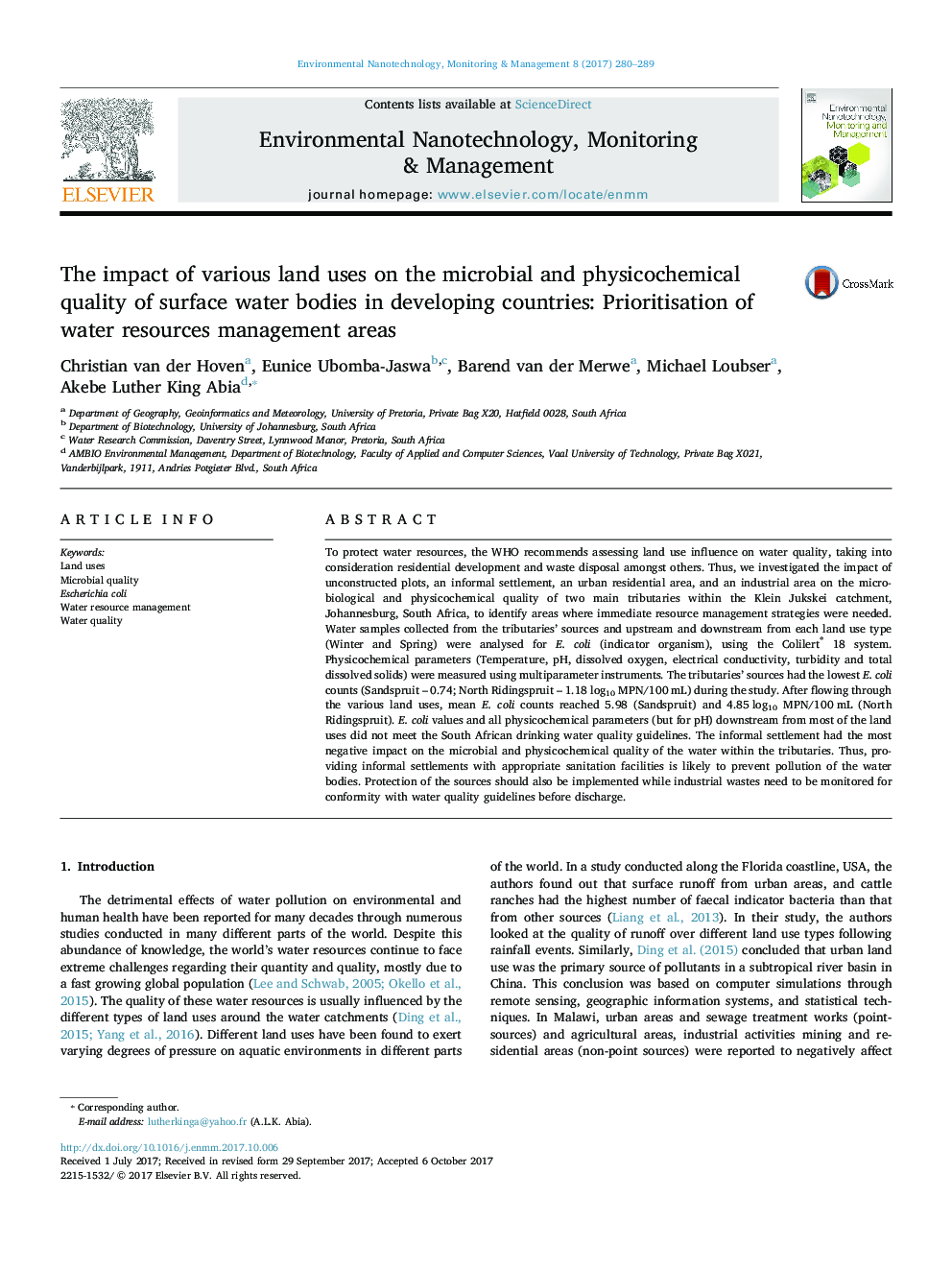| کد مقاله | کد نشریه | سال انتشار | مقاله انگلیسی | نسخه تمام متن |
|---|---|---|---|---|
| 5748512 | 1619099 | 2017 | 10 صفحه PDF | دانلود رایگان |
- We studied the impact of land uses on microbial and physicochemical quality of surface water.
- Samples from most sites did not meet the South African standard for drinking water quality.
- Informal settlements had the highest negative impact on the overall quality of the water.
- Provision of sanitary facilities in informal settlements would prevent pollution of the water.
- Industrial effluents need to be monitored to ensure they meet the required standards.
To protect water resources, the WHO recommends assessing land use influence on water quality, taking into consideration residential development and waste disposal amongst others. Thus, we investigated the impact of unconstructed plots, an informal settlement, an urban residential area, and an industrial area on the microbiological and physicochemical quality of two main tributaries within the Klein Jukskei catchment, Johannesburg, South Africa, to identify areas where immediate resource management strategies were needed. Water samples collected from the tributaries' sources and upstream and downstream from each land use type (Winter and Spring) were analysed for E. coli (indicator organism), using the Colilert® 18 system. Physicochemical parameters (Temperature, pH, dissolved oxygen, electrical conductivity, turbidity and total dissolved solids) were measured using multiparameter instruments. The tributaries' sources had the lowest E. coli counts (Sandspruit - 0.74; North Ridingspruit - 1.18Â log10 MPN/100Â mL) during the study. After flowing through the various land uses, mean E. coli counts reached 5.98 (Sandspruit) and 4.85Â log10 MPN/100Â mL (North Ridingspruit). E. coli values and all physicochemical parameters (but for pH) downstream from most of the land uses did not meet the South African drinking water quality guidelines. The informal settlement had the most negative impact on the microbial and physicochemical quality of the water within the tributaries. Thus, providing informal settlements with appropriate sanitation facilities is likely to prevent pollution of the water bodies. Protection of the sources should also be implemented while industrial wastes need to be monitored for conformity with water quality guidelines before discharge.
316
Journal: Environmental Nanotechnology, Monitoring & Management - Volume 8, December 2017, Pages 280-289
